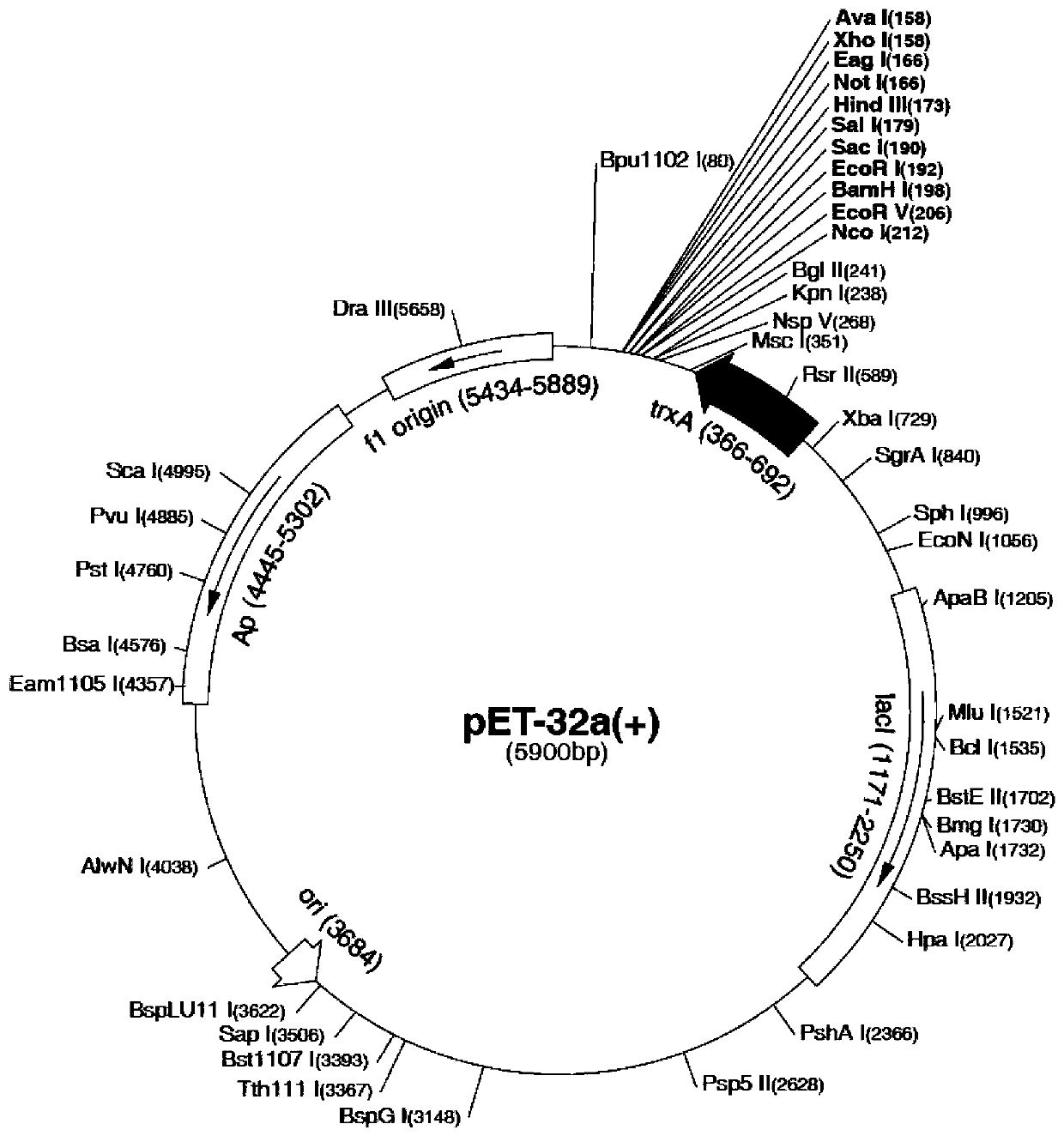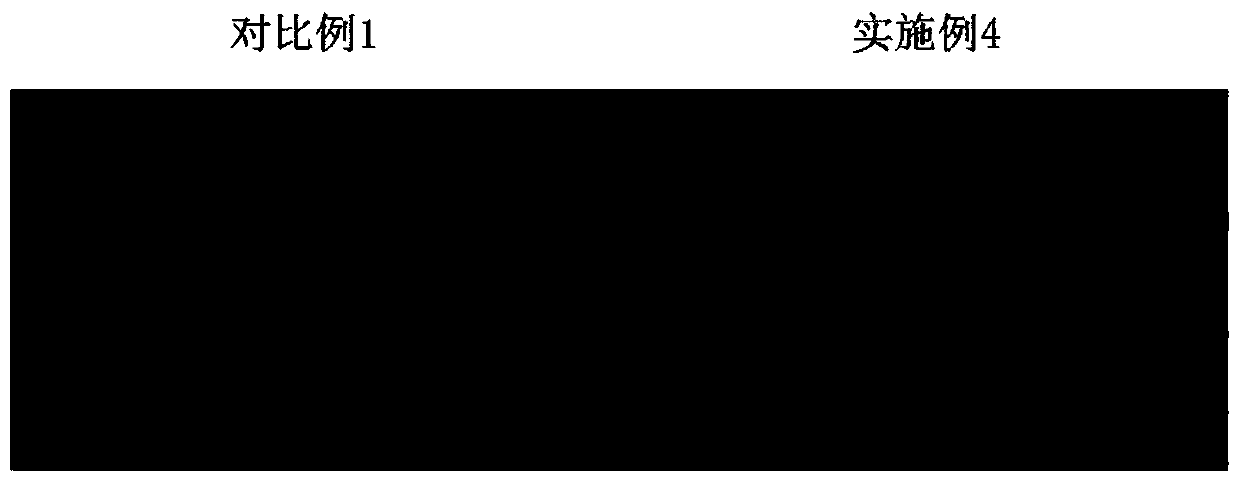Recombinant vector, strain, and expression and purification method of Rhizoctonia solani effector protein
A rice sheath blight bacteria and effector protein technology, applied in the biological field, can solve the problems of protein non-expression and insolubility
- Summary
- Abstract
- Description
- Claims
- Application Information
AI Technical Summary
Problems solved by technology
Method used
Image
Examples
Embodiment 1
[0029] This embodiment provides a recombinant vector and a bacterial strain containing the recombinant vector, and the recombinant vector and bacterial strain are used to express the rice sheath blight effector protein; wherein, the recombinant vector is obtained by introducing the rice sheath blight The gene encoding the effector protein is inserted between the EcoRI and XhoI restriction sites of the pET-32a vector. The map of the pET-32a vector is attached figure 1 As shown; the rice sheath blight effector protein is named AGLIP1, and its amino acid sequence is shown in the sequence listing SEQID NO:1; the nucleotide sequence of the gene encoding the rice sheath blight effector protein is as in the sequence listing Shown in SEQ ID NO:2.
[0030] In addition, the bacterial strain comprising the above-mentioned recombinant vector is obtained through the following steps:
[0031] (1) Take 50 μL of Escherichia coli BL21 competent cell suspension from the -80°C refrigerator, tha...
Embodiment 2
[0036] This embodiment provides a method for expression and purification of rice sheath blight effector protein, which comprises the following steps:
[0037] (1) Place 1 mL of the bacterial strain containing the recombinant vector provided in Example 1 above into 5 mL of LB liquid medium, add ampicillin antibiotic, and then place it at 37°C and 200 rpm for overnight shake flask activation culture to obtain cultured liquid.
[0038] (2) Add all the above-mentioned culture solution to 100mL LB liquid medium, add ampicillin, and then place it at 37°C and 200rpm for expanded culture until OD600=0.4, then add 100μL with a concentration of 0.1mmol / L isopropyl-β-D-thiogalactopyranoside (IPTG), and placed under the conditions of 20°C and 140rpm to induce expression for 4h, to obtain the induced bacterial liquid.
[0039] (3) Put all the above-mentioned induced bacteria liquid into a 250mL centrifuge bottle, centrifuge at 10000rpm for 5min, discard the supernatant, resuspend the bact...
Embodiment 3
[0043] This embodiment provides a method for expression and purification of rice sheath blight effector protein, which comprises the following steps:
[0044] (1) Place 1 mL of the bacterial strain containing the recombinant vector provided in Example 1 above into 5 mL of LB liquid medium, add ampicillin antibiotic, and then place it at 37°C and 200 rpm for overnight shake flask activation culture to obtain cultured liquid.
[0045] (2) Add all the above-mentioned culture solution to 100mL LB liquid medium, add ampicillin, and then place it at 37°C and 200rpm for expanded culture until OD600=0.8, then add 100μL with a concentration of 0.2mmol / L isopropyl-β-D-thiogalactopyranoside (IPTG), and induced expression under the conditions of 20-25°C and 140rpm for 4h to obtain the induced bacterial liquid.
[0046] (3) Put all the above-mentioned induced bacteria liquid into a 250mL centrifuge bottle, centrifuge at 10000rpm for 5min, discard the supernatant, resuspend the bacteria wi...
PUM
 Login to View More
Login to View More Abstract
Description
Claims
Application Information
 Login to View More
Login to View More - R&D
- Intellectual Property
- Life Sciences
- Materials
- Tech Scout
- Unparalleled Data Quality
- Higher Quality Content
- 60% Fewer Hallucinations
Browse by: Latest US Patents, China's latest patents, Technical Efficacy Thesaurus, Application Domain, Technology Topic, Popular Technical Reports.
© 2025 PatSnap. All rights reserved.Legal|Privacy policy|Modern Slavery Act Transparency Statement|Sitemap|About US| Contact US: help@patsnap.com



